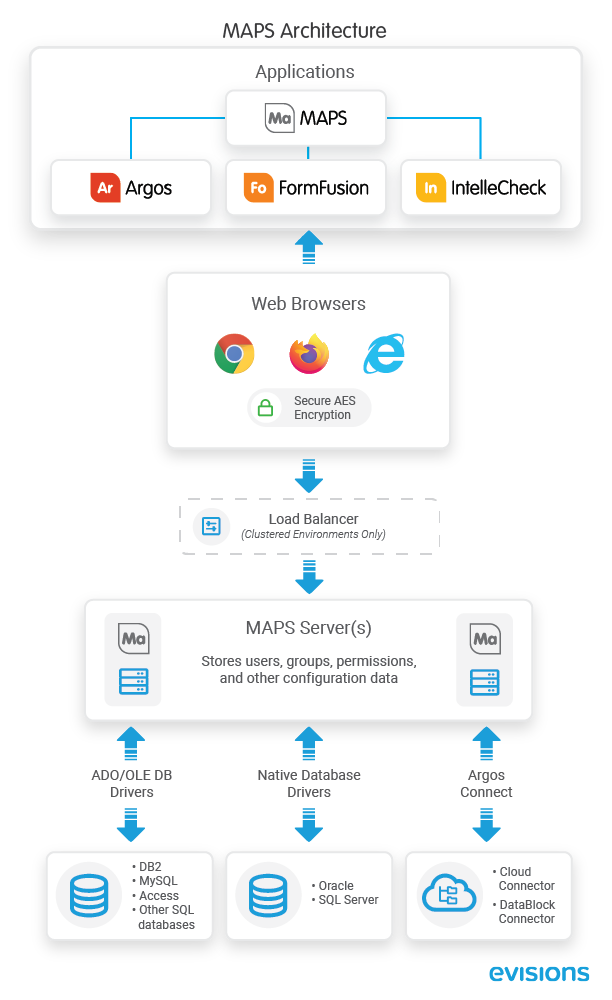What is MAPS?
MAPS stands for Multiple Application Platform Server. It is a web-based application server which deploys the MAPS suite of Evisions products (Argos, IntelleCheck, and FormFusion). MAPS provides a single point of administration for all of the products, and facilitates single sign-on for users to access the applications.
Some key benefits include:
- Web-deployed client software – no need to manually install applications on client computers.
- Central management of resources used by the products (database configuration, users, groups, printers and various security tasks).
- Does not require database drivers on client PCs – all database calls are performed from the server, which passes the results to the clients.
- Highly secure – Uses AES encryption for all server to client communication.
- Server-side email queuing and delivery.
- Server-side web deployment of saved reports.
- Single installation for the entire suite of MAPS products–easily install and configure your Evisions applications.

MAPS Applications
The MAPS applications (Argos, FormFusion, IntelleCheck, and the MAPS Config) are Microsoft Windows executable programs which are downloaded to users' PCs the first time they launch an application via the web launch page. The launch page uses a small Windows program called the Evisions Application Launcher to load the requested product. The application then communicates with MAPS to perform the actions requested by the user.
The MAPS Config application provides a way for administrators to configure and manage the properties of their MAPS server, including installed MAPS applications, users, permissions, resources, etc.
Application Data
Application data (e.g. FormFusion templates, Argos DataBlocks and reports, and IntelleCheck data) and MAPS configuration data is stored on the server where MAPS is installed.
Printing and Emailing
Printing and email handling is done from MAPS and not from the individual applications.
Communication with Data Sources
MAPS uses OLE DB providers or native database drivers to communicate with SQL-based data sources.